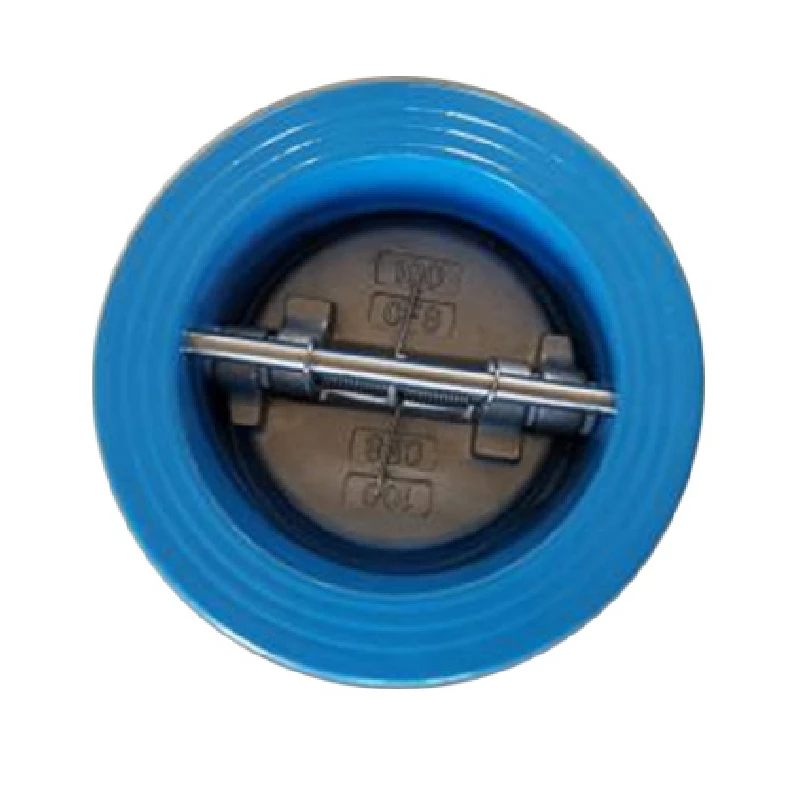12 月 . 03, 2024 18:55 Back to list
rubber lined butterfly valve
Understanding Rubber Lined Butterfly Valves Functionality and Applications
In industrial processes, controlling the flow of liquids and gases is crucial for maintaining efficiency and safety. Among the various types of valves used for this purpose, the rubber lined butterfly valve has gained significant popularity due to its unique design and functional benefits. This article will delve into the structure, advantages, applications, and maintenance of rubber lined butterfly valves.
Structure and Design
A butterfly valve is characterized by a disc that rotates around a shaft, allowing it to open or close the flow path. The rubber lining provides a vital layer of protection and functionality, acting as a seal that prevents leakage when the valve is closed. Typically constructed from durable materials such as ductile iron or stainless steel, these valves are then lined with a layer of rubber (often EPDM or Nitrile) to enhance their performance. The choice of rubber lining materials is critical, as it affects the valve's resistance to chemicals, temperature, and pressure.
The versatile design of the rubber lined butterfly valve allows it to be used for various applications, from water treatment plants to chemical processing facilities. Their compact size means they can fit into tight spaces, while their lightweight nature allows for easier installation and maintenance compared to larger valve types.
Advantages of Rubber Lined Butterfly Valves
1. Corrosion Resistance The rubber lining protects the valve body from corrosive substances, allowing it to be used in aggressive environments without fear of degradation. This is particularly beneficial in industries that handle chemicals or wastewater.
2. Versatility These valves can be employed in various industries, including water and wastewater treatment, food and beverage processing, and HVAC systems. Their ability to handle different media makes them an essential component in many applications.
3. Low Operating Torque The design of the butterfly valve allows for quick operations, requiring minimal torque to open and close. This characteristic not only improves response times but also reduces wear and tear on the valve components.
rubber lined butterfly valve

4. Cost-Effectiveness Due to their simplicity in design and efficiency in operation, rubber lined butterfly valves tend to be more cost-effective than other valve types. Their installation and maintenance costs are lower, making them a preferred choice for budget-conscious projects.
5. Pressure Drop Control These valves are known for their low resistance to flow when fully open, helping to minimize pressure drops within a system. This feature is crucial for maintaining system efficiency, especially in large-scale operations.
Applications
Rubber lined butterfly valves are remarkably versatile and can be found in a myriad of applications across different sectors. In the water treatment industry, they are used to regulate the flow of water and sludge, ensuring effective treatment processes. In the food and beverage sector, they provide reliable shut-off capabilities while maintaining the integrity of the product.
Additionally, rubber lined butterfly valves are employed in the HVAC industry for controlling airflow in ducts. They can also be found in various chemical processing applications where they manage the flow of corrosive substances safely.
Maintenance and Care
To ensure the longevity and reliability of rubber lined butterfly valves, regular maintenance is essential. This includes periodic inspections to check for wear and tear, proper lubrication of moving parts, and validation of the sealing performance. Ensuring that the rubber lining remains intact and free from cracks or abrasions is critical, as any damage can lead to leaks and compromise the system's efficiency.
In conclusion, rubber lined butterfly valves are integral components in many industrial applications. Their robust design, coupled with the advantages of rubber lining, makes them an ideal choice for managing fluid flow in diverse environments. Understanding their functionality and conducting proper maintenance will ensure these valves perform optimally, contributing to the overall success of industrial processes. With their extensive application range and benefits, rubber lined butterfly valves are a worthwhile investment for any facility looking to enhance its flow control systems.
Share
-
Understanding the Differences Between Wafer Type Butterfly Valve and Lugged Butterfly ValveNewsOct.25,2024
-
The Efficiency of Wafer Type Butterfly Valve and Lugged Butterfly ValveNewsOct.25,2024
-
The Ultimate Guide to Industrial Swing Check Valve: Performance, Installation, and MaintenanceNewsOct.25,2024
-
Superior Performance with Industrial Swing Check Valve: The Essential Valve for Any SystemNewsOct.25,2024
-
Industrial Swing Check Valve: The Ideal Solution for Flow ControlNewsOct.25,2024
-
You Need to Know About Industrial Swing Check Valve: Functionality, Scope, and PerformanceNewsOct.25,2024